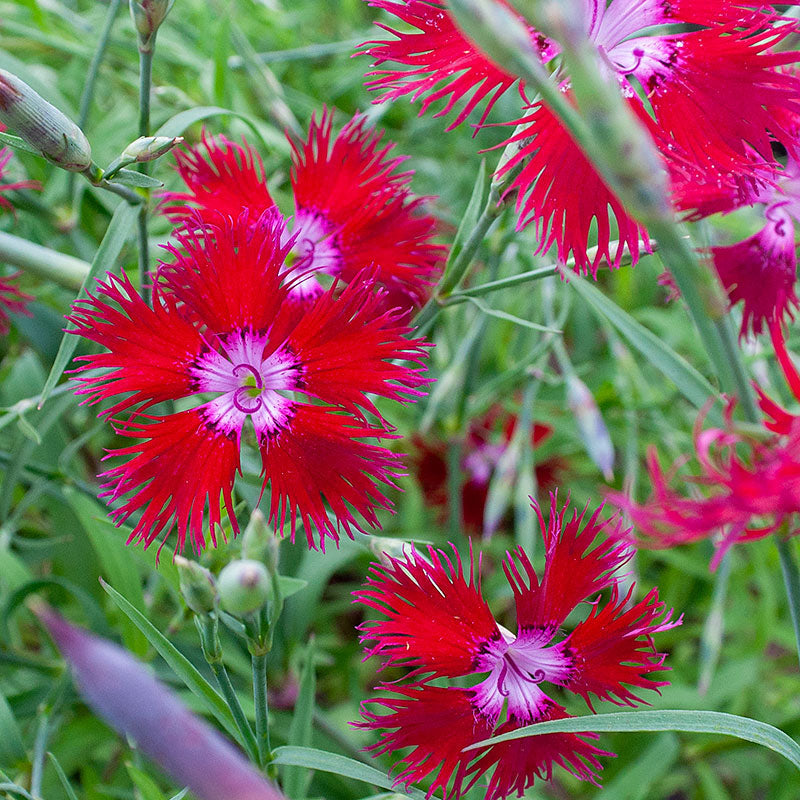SOWING INSTRUCTIONS
Starting Indoors:
6-8 weeks before last frost, sow in seed starting mix, covering containers with humidity dome to retain moisture. Keep at 65-70°F and remove covering once germinating.
Starting Outdoors:
Sow spring to mid-summer for blooms the following year.
WHEN TO SET OUTSIDE
In spring after all danger of frost has passed.
PLACEMENT & CULTIVATION
Sweetly scented fringed pinks are classic cottage garden flowers, gracing gardens since the early 1800s, always valued for their edible flowers and sweet clove scent. Perfect along border edges where the delicate blooms can be enjoyed up close. Their interesting delicate fringed flowers bloom at the ends of the wiry stems and attract butterflies and bees. Best in fertile, well-drained, even gritty soils. Allow to self-sow to keep a continual supply of these lovely antique flowers.
Watering Details:
Water regularly during first growing season, about 1" per week, watering mornings only. Once established water during especially prolonged dry periods. Avoid overwatering and saturated soils.
Soil pH:
Tolerates most soil pH levels, but neutral to alkaline is preferred. If soil is particularly acidic, apply a handful of lime when planting.
Fertilizer:
Apply a low-nitrogen granular, organic fertilizer or 2" of compost in springtime.
Diseases & Pests:
Leaf spots can mar the leaves of Dianthus. Space well apart for good air circulation. Avoid heavy wet soils that will promote crown rots.
When to Cut for Bouquets:
Harvest when two flowers are open on the spray.
































